What's New
Displaying results 2961 - 2970 of 4922

Resource | Presentations,
Fifth National Conference on AIDS
ENDING AIDS BY 2030 Where are we in Asia and opportunities for Indonesia
28 October 2015
Makassar, Indonesia
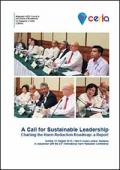
Resource | Publications,
Harm reduction in Malaysia has seen growth from the year 2005 to where we stand now in 2015. Collaborative efforts between the Ministry of Health, the Ministry of Home Affairs, the Prisons Department, the Malaysian AIDS Council and many nongovernmental organisations (NGOs) have allowed access to Opioid Substitution Therapy (OST) and Needle Syringe Exchange to 74,816 and 85,593 clients cumulatively.
On 18th October 2015, in the margins of the 24th International Harm Reduction Conference in Kuala Lumpur, stakeholders in Malaysian harm reduction programs, including the Malaysian Ministry of Health, the National Anti-Drugs Agency, the Centre of Excellence for Research in AIDS (CERiA), addiction psychiatrists, the Addiction Medicine Association Malaysia (AMAM), the Royal Malaysian Police, the Centre for Drug Research, Universiti Sains Malaysia, and people who use drugs convened to discuss the Next Leap Forward in Harm Reduction in Malaysia. This report documents their discussions and makes several key recommendations.
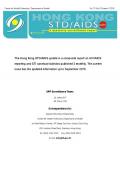
Resource | Publications,
The Hong Kong STD/AIDS update is a composite report on HIV/AIDS reporting and STI caseload statistics published 3 monthly. The current issue has the updated information up to September 2015.
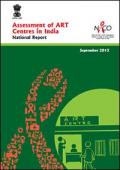
Resource | Publications,
Following almost a decade of ART service provision across the country, NACO commissioned a countrywide assessment of the ART centres from January 2014 to March 2015. The overall goal of the review was two-fold. One was to review the quality of ART service delivery in the country. The second was a validation of the data recorded and reported by ART centres to assess data quality and integrity.
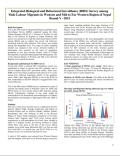
Resource | Fact Sheets,
This is the fifth round of Integrated Biological and Behavioral Surveillance Survey (IBBS) conducted among the Male Labour Migrants (MLM) of 11 districts of Western (5) and Mid to Far Western (6) Regions of Nepal. Primarily, this survey was carried out to track the trend in prevalence of HIV among MLMs and to explore the sexual risk behaviors associated with the HIV infection. This survey was carried during July-September 2015. Two stage 30 cluster sampling method was adopted in this survey. Desired numbers of participants were selected on the basis of population proportion to size from selected clusters. Each of Village Development Committee/Municipality/Sub-Metropolitan city of the selected districts of Western and Mid to Far Western Regions were considered clusters.
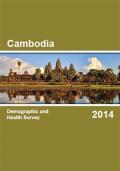
Resource | Publications,
The primary objective of the CDHS is to provide the Ministry of Health (MOH), Ministry of Planning (MOP), and other relevant institutions and users with updated and reliable data on infant and child mortality, fertility preferences, family planning behavior, maternal mortality, utilization of maternal and child health services, health expenditures, women’s status, and knowledge and behavior regarding HIV/AIDS and other sexually transmitted infections. This information contributes to policy decisions, planning, monitoring, and program evaluation for the development of Cambodia at both the national and local government levels.
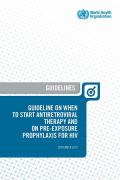
Resource | Guidelines,
This early-release guideline makes available two key recommendations that were developed during the revision process in 2015. First, antiretroviral therapy (ART) should be initiated in everyone living with HIV at any CD4 cell count. Second, the use of daily oral pre-exposure prophylaxis (PrEP) is recommended as a prevention choice for people at substantial risk of HIV infection as part of combination prevention approaches. The first of these recommendations is based on evidence from clinical trials and observational studies released since 2013 showing that earlier use of ART results in better clinical outcomes for people living with HIV compared with delayed treatment. The second recommendation is based on clinical trial results confirming the efficacy of the ARV drug tenofovir for use as PrEP to prevent people from acquiring HIV in a wide variety of settings and populations.
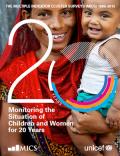
Resource | Publications,
Since the inception of MICS in the mid-1990s, no one document consolidated how MICS has developed and evolved over time.
In this publication, we examine the rationale and activities of the first surveys and how these laid the foundation for the MICS programme. Through a thematic lens, this publication charts the key elements of the MICS programme and recounts the achievements and value of MICS. In the changing data-landscape of a post MDG era, we also examine the strategic role of MICS in future monitoring activities.
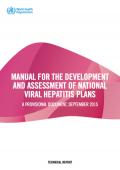
Resource | Tools,
The purpose of this manual is to provide guidance to public health professionals tasked with managing a response to viral hepatitis. As every country’s needs are different with respect to its epidemiology and the current level of response, people would use this manual in different ways. This manual is intended:
- to help think more comprehensively about the hepatitis response in a country;
- to provide a step-by-step approach to setting up a national hepatitis plan and/or programme;
- to propose a governance structure that can be adapted according to needs; and
- to propose the outline of a national hepatitis plan.
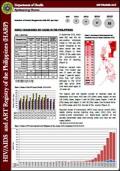
Resource | Fact Sheets,
In September 2015, there were 692 new HIV Ab sero-positive individuals. This was 22% higher compared to the same period last year (565). Most (94%) of the cases were still asymptomatic at the time of reporting.
Ninety-six percent were male. The median age was 27 years old (age range: 7 years-62 years). More than half (52%) belonged to the 25-34 year age group while 31% were youth aged 15-24 years old.





